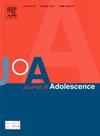Agency and Opportunity in Early Adolescence: Investigating Gender-Specific Patterns in Developmental Trajectories Using Longitudinal Data
Abstract
Introduction
Little research has explored the relationship of opportunity structures, such as parental influence and neighborhood context, with the development of individual agency amongst adolescents, particularly in understanding gender-specific relationships.
Methods
We use longitudinal data from 1188 boys and 1153 girls who were age 10–14 at enrollment and followed for up to 5 years during the Global Early Adolescent Study in Kinshasa, DRC (2017–2022). Group-based trajectory modeling identified gender-specific clusters within two domains of agency, Freedom of Movement and Voice. Multinomial logistic regression assessed the relationship between opportunity structures at the individual, household, parental, peer (Voice only), and neighborhood level with the probability of cluster membership.
Results
We identified three distinct groups for both boys and girls within each domain. Wealth and education were inconsistently related to trajectories and peer influence showed little association with the development of Voice for either gender. Parental monitoring was associated with the development of both domains for boys, but showed no association for girls. Conversely, parental closeness was more strongly associated with development for girls, than for boys. Neighborhood safety was associated with greater Voice and Freedom of Movement for both boys and girls. Neighborhood trust was associated with Freedom of Movement but not Voice for boys, but the opposite for girls.
Conclusions
The design of interventions to promote adolescent empowerment should consider the gendered ways in which parental and neighborhood structures influence the development of agency for adolescents and consider whether gender-specific components may be needed.


 求助内容:
求助内容: 应助结果提醒方式:
应助结果提醒方式:


